The conditions were horrific. Of the estimated 330,000 working on the railroad line, about 80,000 Asian coolies died and about 16,000 allied prisoners died. That was about 38 prisoners for every half mile of track built. The track from Burma to Thailand was about 257 mlles long.
They died from sickness, malnutrion and just plain exhaustion
. The medical care was almost non-existent and many prisoners suffered horribly before dying. The prisoner's diet consisted of rice and salted vegetables served twice a day. Sometimes they were forced to work up to sixteen hours a day under atrocious conditions. Many prisoners were tortured for the smallest offenses.
Hidden records of the prisoners were found after the war, indicating punishments by the Japanese included savage beatings, or being made to kneel on sharp sticks while holding a boulder for one to three hours at a time and being tied to a tree with barbed wire and left there for two to three days without any food or water.
It was 1943 and thousands of Allied Prisoners of War (POW's) and Asian laborers (coolies) did all the heavy manual work by hand or with elephants, since there was no heavy earth moving equipment available.
The Japanese were building the railway to get to the Burmese front to fight the British. It was WW II.
The most famous portion of the railway is Bridge 277, 'the bridge over the River Kwai', which was built over a stretch of river which was then known as part of the Mae Klong
.
While the bridge, immortalised in the 1950's film "The Bridge over the River Kwai" was replaced by a new structure, the railway still remains.
Today, I visit the site of the "Death Railway" as it has become known. I will ride over a portion of the railway and walk the railroad ties that so many thousands of prisoners lost their lives building.
I walk around the sites and see the souvenir and refreshment stands that are selling goods. I take photos of the territory where so much suffering and death of Allied prisoners of War, including Americans, happened.
The train ride over the bridge is at a snail's pace so we can get photos out the window, if possible. There are so many on the train, we are standing shoulder to shoulder. It is difficult to get to a window to photo the scenery.
Once we pass over the bridge the train picks up speed and takes us to our next destination. There is so much history here, it seems a little sad how lightly we take the journey on the train over the tracks of the Death Train, today.
I see the comments you leave and respond when I do. Sometimes it takes a few days before I have internet. You will find the response on the same page you posted yours.
I got a comment from the manager of my job in Texas the other day, Paul K. I am glad to have the guys from work follow along and you too.
The Death Train
Tuesday, January 22, 2013
 Mueang Kanchanaburi, Kanchanaburi, Thailand
Mueang Kanchanaburi, Kanchanaburi, Thailand
Other Entries
-
14Little Cabin In The Woods
Nov 2558 days prior Cedar Creek, United Statesphoto_camera44videocam 0comment 2
Cedar Creek, United Statesphoto_camera44videocam 0comment 2 -
15Final Preparations
Dec 2924 days prior Paragould, United Statesphoto_camera2videocam 0comment 0
Paragould, United Statesphoto_camera2videocam 0comment 0 -
16"Your Bag is Too Big for The Plane"
Jan 0913 days prior Memphis, United Statesphoto_camera3videocam 0comment 0
Memphis, United Statesphoto_camera3videocam 0comment 0 -
17"Don't Sell That Cow"
Jan 0913 days prior Chicago, United Statesphoto_camera3videocam 0comment 0
Chicago, United Statesphoto_camera3videocam 0comment 0 -
18It's 75 Below Zero Here! (-75F)
Jan 1012 days prior Amman, Jordanphoto_camera6videocam 0comment 0
Amman, Jordanphoto_camera6videocam 0comment 0 -
19I Take a Shower on the Balcony
Jan 1111 days prior Bangkok, Thailandphoto_camera28videocam 0comment 0
Bangkok, Thailandphoto_camera28videocam 0comment 0 -
20The Land of Smiles
Jan 1210 days prior Bangkok, Thailandphoto_camera29videocam 0comment 3
Bangkok, Thailandphoto_camera29videocam 0comment 3 -
21I GET EVEN
Jan 139 days prior Bangkok, Thailandphoto_camera16videocam 0comment 0
Bangkok, Thailandphoto_camera16videocam 0comment 0 -
22I Eat A Fried Banana and Think I Might Die
Jan 157 days prior Bangkok, Thailandphoto_camera12videocam 0comment 1
Bangkok, Thailandphoto_camera12videocam 0comment 1 -
23The Tuk Tuk and I
Jan 157 days prior Bangkok, Thailandphoto_camera61videocam 0comment 0
Bangkok, Thailandphoto_camera61videocam 0comment 0 -
24It's Really Grand!
Jan 157 days prior Bangkok, Thailandphoto_camera46videocam 0comment 4
Bangkok, Thailandphoto_camera46videocam 0comment 4 -
25Kho San Rd
Jan 175 days prior Bangkok, Thailandphoto_camera40videocam 0comment 11
Bangkok, Thailandphoto_camera40videocam 0comment 11 -
26The Reclining Buddha
Jan 184 days prior Bangkok, Thailandphoto_camera84videocam 0comment 0
Bangkok, Thailandphoto_camera84videocam 0comment 0 -
27Please, Don't Get Up For Me
Jan 211 day prior Mueang Kanchanaburi, Thailandphoto_camera83videocam 0comment 0
Mueang Kanchanaburi, Thailandphoto_camera83videocam 0comment 0 -
28Let Sleeping Thais Sleep
Jan 211 day prior Bangkok, Thailandphoto_camera73videocam 0comment 0
Bangkok, Thailandphoto_camera73videocam 0comment 0 -
29Sawat dee Krap (Hello)
Jan 211 day prior Mueang Kanchanaburi, Thailandphoto_camera69videocam 0comment 5
Mueang Kanchanaburi, Thailandphoto_camera69videocam 0comment 5 -
30Bamboo Rafting
Jan 22earlier that day Mueang Kanchanaburi, Thailandphoto_camera48videocam 1comment 0
Mueang Kanchanaburi, Thailandphoto_camera48videocam 1comment 0 -
31The Death Train
Jan 22 Mueang Kanchanaburi, Thailandphoto_camera21videocam 0comment 0
Mueang Kanchanaburi, Thailandphoto_camera21videocam 0comment 0 -
32He Fans Me With His Ears
Jan 22later that day Mueang Kanchanaburi, Thailandphoto_camera41videocam 0comment 2
Mueang Kanchanaburi, Thailandphoto_camera41videocam 0comment 2 -
33Bridge On The River Kwai
Jan 22later that day Mueang Kanchanaburi, Thailandphoto_camera34videocam 0comment 0
Mueang Kanchanaburi, Thailandphoto_camera34videocam 0comment 0 -
34The Slide
Jan 22later that day Mueang Kanchanaburi, Thailandphoto_camera61videocam 1comment 0
Mueang Kanchanaburi, Thailandphoto_camera61videocam 1comment 0 -
35The Jolly Frog
Jan 231 day later Mueang Kanchanaburi, Thailandphoto_camera82videocam 0comment 5
Mueang Kanchanaburi, Thailandphoto_camera82videocam 0comment 5 -
36I Don't Have to Go to Work Today
Jan 242 days later Mueang Kanchanaburi, Thailandphoto_camera59videocam 0comment 4
Mueang Kanchanaburi, Thailandphoto_camera59videocam 0comment 4 -
37Leaving (Sadly) Kanchanaburi
Jan 253 days later Phra Nakhon Si Ayutthaya, Thailandphoto_camera99videocam 0comment 2
Phra Nakhon Si Ayutthaya, Thailandphoto_camera99videocam 0comment 2 -
38Arriving in Ayutthaya
Jan 264 days later Phra Nakhon Si Ayutthaya, Thailandphoto_camera55videocam 0comment 0
Phra Nakhon Si Ayutthaya, Thailandphoto_camera55videocam 0comment 0 -
39A Capitol In Ruins
Jan 275 days later Phra Nakhon Si Ayutthaya, Thailandphoto_camera141videocam 0comment 0
Phra Nakhon Si Ayutthaya, Thailandphoto_camera141videocam 0comment 0 -
40Loneliness vs Solitude
Jan 286 days later Bangkok, Thailandphoto_camera38videocam 0comment 0
Bangkok, Thailandphoto_camera38videocam 0comment 0 -
41Face to Face with Danger
Jan 308 days later Bang Lamung, Thailandphoto_camera23videocam 0comment 0
Bang Lamung, Thailandphoto_camera23videocam 0comment 0 -
42No Money - End of Trip?
Feb 0211 days later Bang Lamung, Thailandphoto_camera33videocam 0comment 4
Bang Lamung, Thailandphoto_camera33videocam 0comment 4 -
43Walking "Walking Street"
Feb 0312 days later South Pattaya, Thailandphoto_camera86videocam 1comment 0
South Pattaya, Thailandphoto_camera86videocam 1comment 0 -
44Some Things I Really Shouldn't Tell
Feb 0514 days later South Pattaya, Thailandphoto_camera43videocam 0comment 4
South Pattaya, Thailandphoto_camera43videocam 0comment 4 -
45There Might Be a Better Place Somewhere
Feb 0817 days later South Pattaya, Thailandphoto_camera26videocam 0comment 0
South Pattaya, Thailandphoto_camera26videocam 0comment 0 -
46I'm A Night Rider
Feb 1019 days later South Pattaya, Thailandphoto_camera64videocam 0comment 0
South Pattaya, Thailandphoto_camera64videocam 0comment 0 -
47700 Years Ago
Feb 1221 days later Chiang Mai, Thailandphoto_camera160videocam 0comment 0
Chiang Mai, Thailandphoto_camera160videocam 0comment 0 -
48My Feet
Feb 1322 days later Chiang Mai, Thailandphoto_camera81videocam 0comment 0
Chiang Mai, Thailandphoto_camera81videocam 0comment 0 -
49The Magic Buddha
Feb 1423 days later Chiang Mai, Thailandphoto_camera194videocam 0comment 0
Chiang Mai, Thailandphoto_camera194videocam 0comment 0

 Mueang Kanchanaburi, Kanchanaburi, Thailand
Mueang Kanchanaburi, Kanchanaburi, Thailand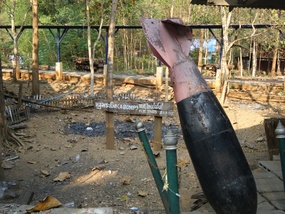
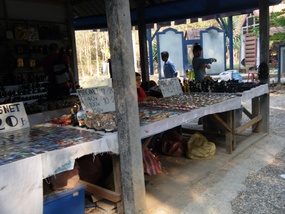



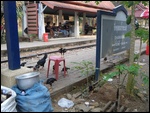
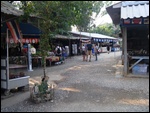
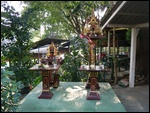
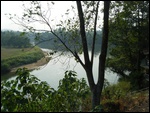
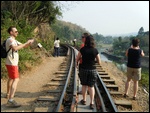
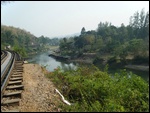
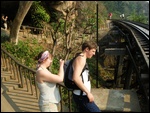
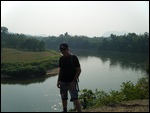
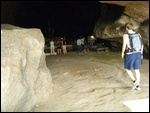
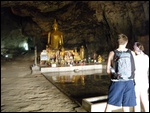
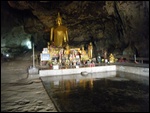
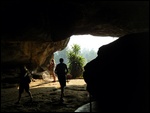
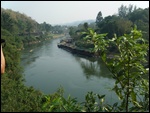
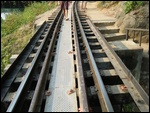
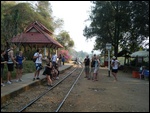
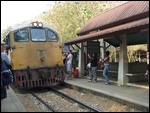
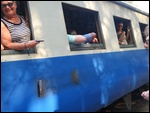
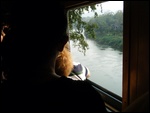
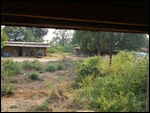
2025-05-22